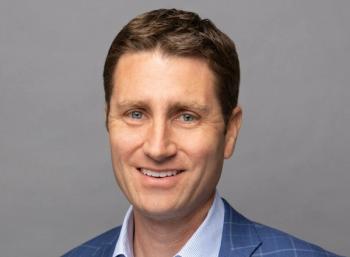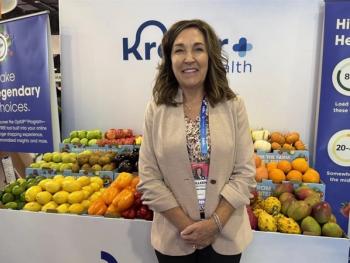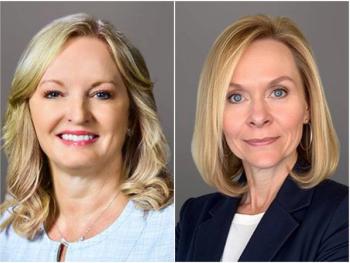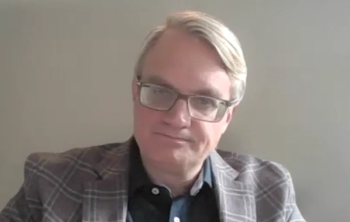
Improving diversity without considering race in admissions: Lessons from a medical school
California has barred public universities from weighing race for nearly 30 years. Mark Henderson of UC-Davis School of Medicine explains how the school still made gains in diversity.
While Mark Henderson says he was disappointed by the Supreme Court’s decision on affirmative action in college admissions, he doesn’t think it makes his job much worse.
The Supreme Court issued a historic
California has prohibited public universities from considering race in admission decisions since 1996, and several other states have similar laws.
Even so, UC Davis School of Medicine has emerged as one of the most diverse medical schools in America.
UC Davis is ranked third in diversity among all medical schools in the country, according to
In an interview with Chief Healthcare Executive® Thursday afternoon, Henderson says UC Davis School of Medicine has used a variety of holistic practices in admissions to improve the diversity of the school.
“I definitely think there's a path forward for institutions who have a mission and want to live by that mission or act on that mission, not just talk about it,” Henderson says.
“So I'm not completely defeated by this,” he says after the high court’s decision. But he says he can understand why a lot of people are upset.
Henderson discusses some of the ways other medical schools can move ahead with their diversity goals, even if they can’t weigh race in the admissions process.
Considering ‘lived experience’
UC Davis School of Medicine is looking beyond the academic performance of applicants, Henderson notes.
“Basically, what we've done is we've developed other ways of assessing candidates,” he says.
The medical school is looking at a variety of factors in assessing candidates with the potential to be doctors.
While UC Davis considers grades, Henderson says, “There are many other factors we use, and principally, those include lived experience.”
The school will consider if students have had to take jobs while pursuing their education. Henderson says one of the medical school’s interviewers regularly asks applicants if they’ve ever had “a real job.”
Students who have had to work while maintaining good grades are more apt to stand out in the UC Davis admission process than those who have been in “an educational tunnel from kindergarten to medical school,” Henderson says.
UC Davis considers the "distance traveled", or the socioeconomic factors, such as the education level of the applicant's parents, their income, and how much aid they received in college, he says.
‘Economic representation’
At UC Davis, Henderson says the medical school has placed a great focus on providing opportunities for applicants from families of lower incomes. Many medical students come from more affluent families, and UC Davis has focused on “economic representation.”
“We've developed some tools that look at the economic distress, if you will, the economic disadvantage of students,” Henderson says.
“Through that mechanism, it turns out, of course, that our classes have become much more racially and ethnically diverse as well,” he says.
As he notes, many of those students also come from families who are Black or Hispanic, and consequently, the school’s racial diversity has improved, even if race itself isn’t a criteria in admissions decisions.
Henderson notes the focus on drawing more students from more modest economic backgrounds isn’t just about improving diversity. It’s a key step toward improving care and closing gaps in health outcomes for disadvantaged communities.
“A lot of our patients come from, you know, humble beginnings and humble, economic circumstances where they face many barriers,” Henderson says. “So we feel like our students are different and they're able to relate to patients in a way that's very authentic and we think improves care in the long run.”
UC Davis would like to draw more medical students from rural communities, Henderson says.
“Rural America is left out of healthcare often,” he says. “So I don't know how we're ever going to fix that until we start accepting students into medical school that come from rural backgrounds.”
Many in rural communities have had fewer educational opportunities and lower incomes, making medical school a much more difficult proposition.
“There's so many things that are stacked against them,” Henderson says. “So our school really tries to level the playing field and to the extent that we can for these marginalized or excluded communities by accepting students from those communities.”
‘Long-term commitment’
Medical schools that are aiming to improve their diversity without race-conscious admissions are going to have to develop “local solutions,” Henderson says.
Institutions should look to expand partnerships with community colleges to identify promising students, he suggests. UC Davis has strong relationships with community colleges and works to enable students to transfer into undergraduate programs, where they can get opportunities to explore healthcare fields, he says.
Institutions should look at ways to provide more opportunities to students of lower incomes, and those who are the first in their families to go to college. Henderson says attracting a more economically diverse group of students to college, and eventually medical schools, could yield long-term dividends.
“You're going to automatically bring in people who have a deeper commitment to going back to rural Kansas,” he says.
Medical schools can also reach out to institutions in states that have already prohibited the use of race in admissions, Henderson adds. Nine states - California, Florida, Idaho, Michigan, Nebraska, New Hampshire, Oklahoma and Washington - have barred colleges from considering the race of applicants.
Medical schools, and colleges and universities, must understand that improving the diversity of their institutions isn’t going to happen quickly. Henderson joined UC Davis 17 years ago, and it took years to see progress. “You've got to be in this for the long game,” he says.
Leaders must be invested in the mission of improving diversity, he says.
“It takes long-term commitment, and it takes leadership,” Henderson says.
While UC Davis has found ways to improve racial and ethnic diversity without considering race, Henderson says institutions should have the option of weighing an applicant’s race as one factor in admissions.
“I think in my ideal world, we would be able to consider everyone's identity, whether it's race or class, or all aspects of their identity that are relevant to meeting our mission, in our case, healthcare,” he says.

















































